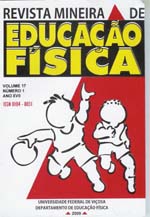THE RELATIVE AGE EFFECT ON SOCCER PLAYERS IN THE 2014 FIFA WORLD CUP
Keywords:
relative age, World Cup, chronological ageAbstract
The aim of this study was to verify the existence of relative age and to analyze its effects on players in the 2014 FIFA World Cup. The information was acquired from the official list of players (containing the total number of players summoned by each national team, counting with those who were not on the 23-player final list) published on the FIFA website, totaling a number of 958 players so that the existence of the Relative Age could be proved; the advantages presented by players with greater chronological age compared to the others, such as height, body weight, body composition, strength, speed, stamina, knowledge of the context of the game and decision making, motivation, selfconfidence and self-concept. The dates of birth of the players participating in the 2014 FIFA World Cup were collected and divided into four quartiles (1st quartile: players born in January, February and March; 2nd quartile: players born in April, May and June; 3rd quartile: players born in the months of July, August and September; and 4th quartile: the ones born in the months of October, November and December). It was made a descriptive statistical, using the statistical software Statistical 7.0, with a significance index of p< 0.05. The results were presented in charts, and the relative age effect on the players who took part in the World Cup was proved.
Downloads
References
CARLI, C.G.; LUGUETTI, N.C.; RÉ, A.H.N.; BÖHME, M.T.S. Efeito da idade relativa no futebol. R. bras. Ci. e Mov., v. 17, n. 3, p. 25-31, 2009.
ROGEL, Thiago; ALVES, Ivanildo; FRANÇA Henrique; VILARINHO, Rodrigo; MADUREIRA, Fabrício. Efeitos da Idade Relativa na seleção de talento no futebol. Brasil: Universidade Metropolitana de Santos, 2007.
GASTALDO, Édison. "O país do futebol" mediatizado: mídia e Copa do Mundo no Brasil. Sociologias, Porto Alegre, n. 22, p. 353-369, 2009.
WAGENER, 2008 apud BETTI, Mauro. Copa do Mundo e Jogos Olímpicos: inversionalidade e transversalidade na cultura esportiva e na Educação Física Escolar. Motrivivência, v. 21, n. 32/33, p.16-27, 2009.
MORAES, L.C.C.A.; PENNA, E.M.; FERREIRA, R.M.; COSTA, V.T.; MATOS, A.F. Análise do quartil de nascimento de atletas profissionais de futebol. Pensar a Prática, Goiânia, GO, 2009.
FRAINER et al. apud PALMA, Alexandre; ALMEIDA, Marcela de Lencastre. Efeito da idade relativa no futebol feminino: análise da Copa do Mundo Sub 17, da FIFA. Rev. ARQUIVOS em Movimento, Belo Horizonte: Departamento de Educação Física da Universidade Federal de Minas Gerais, 2010.
RIBEIRO, Ricardo Jorge da Silva. Efeito da idade cronológica na distribuição dos futebolistas por escalões de formação e pelas diferentes posições específicas Porto: Faculdade de Desporto Universidade do Porto, 2009.
FOLGADO, H.; CAIXINHA, P. H.; SAMPAIO, J.; MAÇÃS, V. Efeito da idade cronológica na distribuição dos futebolistas por escalões de formação e pelas diferentes posições especificas. Revista Portuguesa de Ciência do Desporto, 2009.
Downloads
Published
How to Cite
Issue
Section
License
Os artigos submetidos e publicados são de inteira responsabilidade de seus autores, não refletindo necessariamente a opinião do Comitê Editorial. A revista se reserva o direito de efetuar, nos originais, alterações de ordem normativa, ortográfica e gramatical, com vistas a manter o padrão culto da língua, respeitando, porém, o estilo dos autores. O manuscrito submetido deve ser original, não podendo ter sido publicado em qualquer outro veículo de informação científica, e nem submetido para publicação em outra revista científica. Os trabalhos publicados passam a ser propriedade da revista Mineira de Educação Física, ficando sua reimpressão total ou parcial de acordo com a licença Creative Commons Attibution 4.0. Deve ser consignada a fonte de publicação original. Os originais não serão devolvidos aos autores. As opiniões emitidas pelos autores dos artigos são de sua exclusiva responsabilidade.





 Esta obra está licenciada com uma Licença
Esta obra está licenciada com uma Licença 